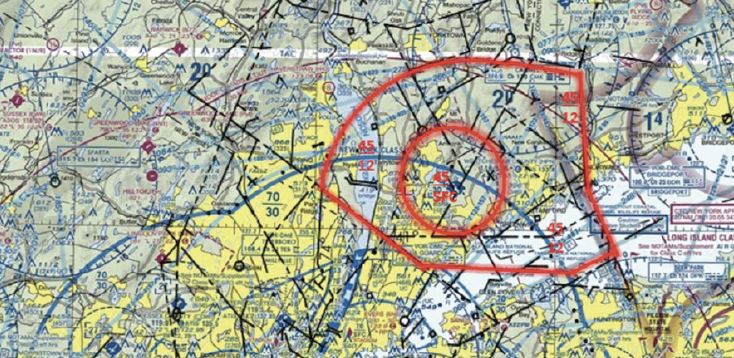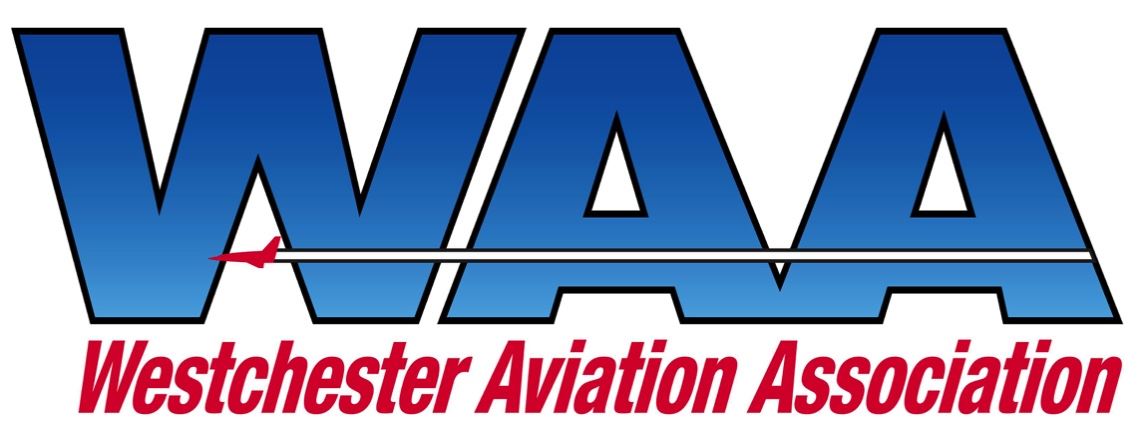HPN Tower Class C Study Proposal Aims to Enhance Safety and Avoid Traffic Conflicts:
The Devil is in the Details
-
INTRODUCTION
Earlier this year, HPN Tower produced a proposal to create Class C airspace in the vicinity of Westchester County Airport. The proposal referenced numerous conflicts between jet and turboprop arrivals to the airport and VFR traffic, both while the arrivals are on approach and while being vectored for the final approach course. In nearly all cases, the conflicting VFR traffic was fully legal in being at least just outside the HPN Class D airspace. Yet, with our large percentage of jet and turboprop operations at HPN, ATC (both NY Tracon and Tower) frequently need to take action to avoid these VFRs in local HPN airspace.
Our WAA corporate flight department members also have experienced these conflicts frequently in their operations, as have some of our light General Aviation IFR pilots.
At present, the HPN Tower Class C Study Proposal is being reviewed internally by FAA, with a number of offices (e.g., the NY Tracon Airspace and Procedures area, and the Air Traffic Organization Eastern Service Center located near Atlanta). The Class C proposal, if approved within FAA, may differ significantly from the Tower Class C Study Proposal in its lateral dimensions, shape and altitudes.
Read the Tower Class C Study Proposal Here.The Tower Study Proposal includes a shape of the Class C airspace as shown below:

WAA CURRENT POSITION
The WAA has reviewed the Tower Study Proposal and is grateful to HPN Tower personnel who explained the proposal at our August 2022 ATC/Pilot Quarterly Meeting.
Watch the video of that meeting Here.
Our review leads us to conclude that the Tower Study Proposal seeks to remedy a real and frequent problem, i.e., the conflicts of “legal” VFR aircraft on the final approach courses to both runways outside of the HPN Class D airspace, and the conflicts of those VFR aircraft relating to the vectoring of IFR traffic (largely jets and turboprops) to the east and southeast of the airport.
WAA has been active in prior years, in cooperation with the Tower, in educating VFR pilots to the arrival and departure streams around the airport. We have spoken on this at a WAA meeting with a joint presentation by WAA and ATC, and we have produced a video with similar content which you can watch Here. Notwithstanding these voluntary efforts, the traffic conflicts have persisted.
Although we at WAA understand the concept and experience behind the Tower’s proposal, we have a number of concerns that we believe must be addressed before specific Class C proposed rulemaking occurs. These include:
-
StaffingThe Class C proposal must ensure that there is appropriate staffing in both the HPN Tower and NY Tracon/LGA Area to accommodate the increased traffic that will require transponder codes when leaving HPN, radar services for all VFR departures, and NY Tracon radar services for all VFR arrivals. We are concerned that the current frequent combination of Clearance Delivery/Flight Data and Ground Control positions at HPN will result in delays and frequency congestion if those combined positions are in place with the Class C airspace adopted. We are concerned that the current frequent combination of the 126.4 and 120.8 NY Tracon NOBBI and HAARP sectors will be frequency saturated by HPN VFR arrivals and departures. Ensuring adequate staffing at both the Tower and Tracon has been a challenge for the FAA for many years. We believe that without increased staffing at both facilities that the Class C proposal will result in substantial degradation of service for both IFR and VFR aircraft arriving and departing HPN.
-
Lateral DimensionsWAA would like to see that any Class C proposal limit the airspace dimensions to the greatest extent possible that also protects arriving and departing IFR traffic. We are keenly interested in keeping the entire Hudson River free of Class C restrictions, with the western border of the airspace preferably being the east shoreline of the Hudson. Few arriving IFR aircraft come from this direction. Departing IFR jets and turboprops are almost always climbing through 3,000’ into the Class B airspace by the time they reach the Hudson River off of both runways. To the northeast of the airport, the Tower Study Proposal has the Class C airspace practically abutting Danbury Airport Class D airspace and we believe this needs to be remedied.
-
Class C Altitude FloorsWAA encourages higher altitude floors than 1,200’ MSL to the east and southeast of the airport to the maximum extent allowed. Arriving IFR traffic are often at 3,000’ or higher over the land, descending to 2,000’ only south of the Long Island Sound shoreline on approach to Runway 34, or, for Runway 16, when nearing the final approach course. We want to provide room for flight schools and arriving/departing VFRs to conduct non-Class C operations up to 2,000’ in these areas as lower altitudes are not needed to protect arriving IFR aircraft.
The WAA is grateful to HPN Tower for inviting our organization’s suggestions on the Study Proposal, and taking our initial comments in letter form. This letter which we submitted in November 2022 includes the points raised above and other concerns. Tower has agreed to consider and transmit our WAA suggestions to the other FAA areas that are considering the HPN Tower Study Proposal. We believe that this is the cooperative FAA/User approach to airspace issues that could produce a better outcome for all concerned. This approach allows us to have our collective voice heard long before the formal FAA official proposed rulemaking and the short comment period under the Administrative Procedure Act, which would happen significantly later in the process if FAA as an entity wishes to proceed toward adoption.
Our WAA November 2022 letter containing these and more comments can be found Here.
CONCLUSION
WAA welcomes our members’ comments and concerns as this Class C process unfolds and we further consider our position on the airspace proposal. At this time, as our November 2022 letter indicates, we are reserving endorsement of the Class C concept as a whole, pending further study of the issues we have identified. We look forward to working with FAA as this concept is refined.
